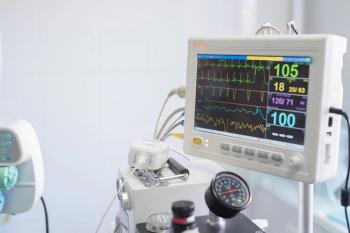
Are endometriosis and birth weight linked?
Results from a recent study reinforce the developmental origins theory.
A lower standardized birth weight for gestational age was associated with an increased rate of endometriosis in adult life, according to a
The cohort study of 3,406 women, all born in Uppsala, Sweden, between 1933 and 1972, culled data from archived birth records and an endometriosis diagnosis between ages 15 and 50, as recorded in national patient registers.
During the follow-up years from 1968 to 2008, the rate of endometriosis was 1.08 per 1,000 woman-years. In total, 111 women were diagnosed with endometriosis, all between ages of 25 to 30 or 40 to 50.
A lower birth weight was a predictor of endometriosis (HR 1.35 per standard deviation decrease, 95% CI 1.08 - 1.67).
The rate of subsequent endometriosis among grown children was 35% higher per standard deviation decrease in their standardized birth weight, but the effect was lessened when disease onset occurred during the later stage of reproductive life.
For analysis, there were four categories of birth weight: less than 3.0 kg, 3.0 – 3.4 kg, 3.5 – 3.9 kg and at least 4.0 kg. Adjusting for gestational age and birth year, the results were consistent, with a linear negative association between weight at birth and risk of subsequent endometriosis.
An increased rate of endometriosis was also detected among women with fewer live births (HR 2.38, 95% CI 1.40 – 407 for one child vs. two or more children: HR 6.09, 95% CI 3.88 – 9.57 for no child vs. two of more children).
“In line with prior studies, we observed an inverse association between number of births and endometriosis,” wrote the authors in the Journal of Epidemiology and Community Health. “The mechanism can be explained by the menstrual reflux theory; during menstrual period some fallen endometrial fragments could retrograde through the fallopian tubes and be implanted in the peritoneal cavity resulting in ectopic uterine mucosa.”
Hence, women with fewer live births are at increased risk of menstrual reflux and subsequent external endometriosis.
A diagnosed infertility problem was also linked to endometriosis (HR 2.00, 95% CI 1.10 – 3.61).
“All the observed associations were stronger for external endometriosis,” the authors wrote.
The authors noted that previous studies have yielded inconsistent results about the association between birth characteristics and risk of endometriosis.
Most cases of endometriosis in the current study were external endometriosis (n = 91), such as outside the uterus, whereas incidence of adenomyosis increased gradually from age 35 (n = 24).
In total, 95% of endometriosis cases were found in an inpatient register (n = 105) and the remainder from an outpatient register (n = 6), including hospital day surgery.
None of the outcomes were associated with a mother’s length of gestation.
A mother’s age, a family’s socioeconomic position and adult education also were not linked to incidence of endometriosis or its subtypes. Hysterectomy did not change the main findings. However, women with older fathers had a lower incidence of endometriosis.
Compared to the main findings of the study, sensitivity analyses revealed somewhat stronger associations when limited to women who were followed from age 15 or to the inpatient register cases.
Newsletter
Get the latest clinical updates, case studies, and expert commentary in obstetric and gynecologic care. Sign up now to stay informed.
















